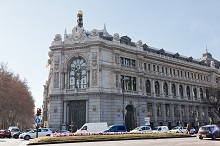Témpore books YE 2018 net result that exceeds initial-year forecasts by 13%
The REIT booked revenues of over EUR7 million, equating to a negative result of EUR384,394 and its gross asset value (GAV) doubled during the year.
Madrid, 26 February 2019. Témpore Properties, the REIT specialising in residential property lettings and created by Sareb, posted a YE 2018 net result that came in above initial-year forecasts. The company ended its first full year with a negative result of EUR384,394, 13% less than initially estimated in its Information Document for Listings on the MAB (Documento Informativo de Incorporación al MAB – DIIM). According to its own estimates, Témpore will start to turn a profit by 2020.
The company – which at 31 December 2018 managed a portfolio of 2,249 residential rental properties across various Spanish provinces – registered EUR7.3 million in revenue, in line with the MAB Capital Increase Prospectus published at the time of its share capital increase last December.
The company managed to lower the portfolio’s NPL ratio from 5.5% at YE 2017 to 4%.
Témpore, the company created by Sareb in July 2017, first listed on the Alternative Stock Exchange (MAB) on 3 April 2018 with a GAV of EUR175 million, a figure which doubled to EUR338.9 million by year-end, thanks to an 8% value uplift in its original portfolio and the acquisition of 895 properties via its ROFO agreement with Sareb.
After completing the share capital increase required to acquire this new residential property portfolio, Témpore’s NAV at YE 2018 stood at EUR339.1 million, equating to EUR12.54 per share, up 4.7% on the previous year-end’s NAV (EUR11.97 per share).
The latest residential property acquisition has allowed Témpore Properties to boost the quality of its portfolio, which comprises properties located in large developments that have been built in the last 10 years. It has also expanded its geographical footprint to 15 Spanish provinces.
Nicolás Díaz Saldaña, CEO of Témpore Properties, said “in 2018 the company successfully took advantage of the favourable property cycle and rising rental demand in the residential sector to double the size of its portfolio and move one step closer to its goal of improving its returns by 2020”.


